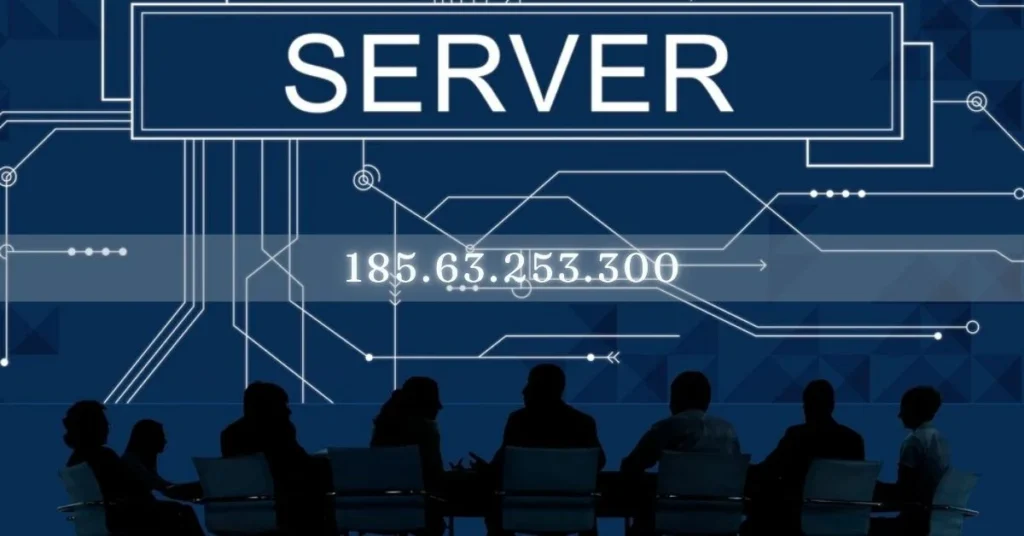Introduction to IPv4 and its limitations
Networking is the backbone of our digital world, and at its foundation lies the Internet Protocol version 4 (IPv4). This system has powered countless devices and connections since its inception. Yet, despite its success, IPv4 has significant limitations that can sometimes lead to confusion—especially when it comes to IP addresses that break conventional rules.
Enter 185.63.253.300—a sequence of numbers that raises eyebrows in networking circles. What makes this particular address so intriguing? As we dive deeper into its significance, you’ll discover how 185.63.253.300 defies traditional IPv4 norms and why it’s sparking conversations in tech communities worldwide.
Get ready to explore the good, the bad, and the controversial aspects surrounding this unique IP address as we uncover what it means for future networking endeavors!
Explanation of 185.63.253.300 and its significance
185.63.253.300 is a fascinating example in the world of IP addresses, primarily because it defies conventional standards set by IPv4 protocols.
IPv4 allows for a total of approximately 4.3 billion unique addresses, but each address must fall within specific numerical limits—ranging from 0.0.0.0 to 255.255.255.255.
The inclusion of “300” at the end of this address pushes it outside those boundaries, making it an invalid and significant case study for networking professionals and enthusiasts alike.
This anomaly sparks curiosity about how such incorrect addresses can emerge and what implications they hold for internet connectivity and protocol adherence.
It also highlights ongoing challenges in network management and the need for robust systems that can accommodate or correct such discrepancies effectively.
How 185.63.253.300 breaks the traditional IPv4 rules
The IP address 185.63.253.300 stands out in the realm of traditional IPv4 addresses due to its unconventional format. Typically, IPv4 addresses consist of four numerical octets, each ranging from 0 to 255. However, this particular address exceeds the upper limit with its third octet reaching a staggering 300.
Such an anomaly raises eyebrows among networking professionals and enthusiasts alike. It deviates from established standards set by the Internet Engineering Task Force (IETF). This breach not only challenges existing frameworks but also complicates routing protocols that rely on predictable structures.
Moreover, using an invalid IP creates confusion in network configurations and can disrupt communication between devices. As more users become aware of such discrepancies, questions arise about how these anomalies affect overall internet integrity and reliability within networks worldwide.
Advantages and disadvantages of breaking IPv4 rules
Breaking IPv4 rules can sometimes lead to unexpected advantages. For instance, it allows for greater flexibility in address management. Network administrators might find creative solutions when standard protocols fail.
However, these benefits come with notable drawbacks. Compatibility issues may arise as devices struggle to recognize non-standard addresses. This can lead to connectivity problems and increased troubleshooting time.
Moreover, security risks are heightened when rules are bent or broken. Non-compliance can expose networks to vulnerabilities that could be exploited by malicious actors.
The unpredictability of using unconventional IP formats also complicates network planning and scalability. As organizations grow, maintaining a consistent addressing scheme becomes essential for efficient operations.
Balancing innovation with established standards is crucial in the networking landscape. The consequences of disregarding traditional methods should always be considered carefully before taking action.
The controversy surrounding 185.63.253.300
The emergence of 185.63.253.300 has sparked significant debate among networking professionals and enthusiasts alike. Many are puzzled by its existence, as it blatantly violates the established norms of IPv4 addressing.
Critics argue that this IP address undermines the integrity of the entire system. They contend that such deviations can lead to confusion in routing protocols and network management.
On social media platforms, discussions often turn heated, with cybersecurity experts warning about potential misuse or malicious intent associated with non-compliant addresses like 185.63.253.300.
Supporters, however, see this as a challenge to rethink traditional networking rules. They believe innovation should not be stifled by rigid frameworks and that flexibility could pave the way for new solutions in an ever-evolving digital landscape.
As these conversations unfold, many remain vigilant about how this unconventional IP may shape future regulations and practices in internet governance.
Future implications for networking and IP addresses
The future of networking is increasingly complex as we move beyond the limitations of IPv4. With IP addresses like 185.63.253.300 pushing boundaries, new standards are emerging.
As more devices connect to the internet, demand for IP addresses will surge. This may lead to greater adoption of IPv6, which offers a virtually limitless supply of unique addresses.
However, unconventional cases like 185.63.253.300 spark debates about compliance and security in network management.
Innovative routing techniques could emerge from these discussions, prioritizing efficiency over traditional rules.
Moreover, businesses must adapt their strategies around these shifting paradigms to remain competitive in an evolving digital landscape.
In this dynamic environment, understanding how non-compliant IPs fit into broader networking frameworks becomes essential for IT professionals and enthusiasts alike.
Conclusion
The world of networking is constantly evolving, and understanding the intricacies surrounding IP addresses like 185.63.253.300 is essential for anyone looking to navigate this complex landscape. This specific address serves as a case study in how traditional IPv4 rules can be challenged and broken.
By examining the significance of 185.63.253.300, we see not only its role within the broader context of IPv4 limitations but also its implications for future networking practices. The controversy it has sparked underscores the tension between innovation and established protocols.
As we look ahead, it’s clear that such anomalies may shape new standards or provoke discussions on necessary reforms in IP addressing schemes. The journey toward a more efficient internet continues, with each new challenge presenting opportunities for growth and adaptation within our digital infrastructure.
Staying informed about these developments will empower you to better understand not just current trends but also prepare for what lies ahead in the realm of networking and IP addresses—where change is often the only constant.
FAQs
What is 185.63.253.300?
185.63.253.300 is a numerically formatted IP address that appears valid at first glance but is actually invalid because it violates the IPv4 limit for octets—specifically, the value “300” exceeds the maximum of 255.
Why is 185.63.253.300 considered an invalid IP address?
It breaks IPv4 standards, which require each segment (octet) to be between 0 and 255. The last octet in this address is 300, which falls outside the valid range.
What are the consequences of using an invalid IP address like 185.63.253.300?
Using an invalid IP can result in network connectivity errors, prevent proper device communication, and disrupt routing protocols—leading to failed data transmission.
Can an IP like 185.63.253.300 ever work in a real network?
No. IPv4 routers and systems will reject it as non-routable because it doesn’t comply with the protocol’s structure, making it unusable in any practical networking scenario.
What does 185.63.253.300 teach us about IPv4 limitations?
It highlights how strict formatting rules are in IPv4 and reminds network administrators to carefully validate IP addresses to avoid misconfigurations and downtime.






